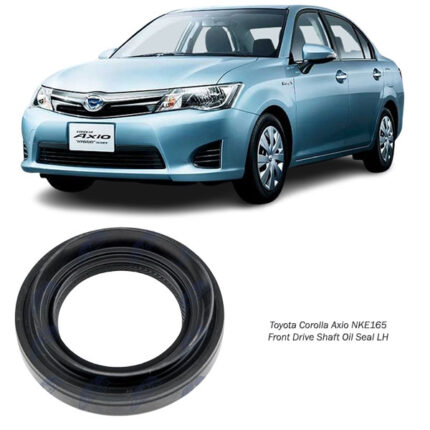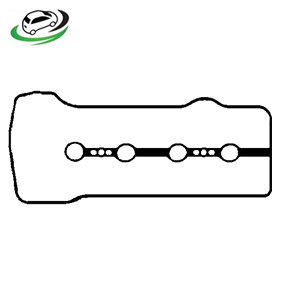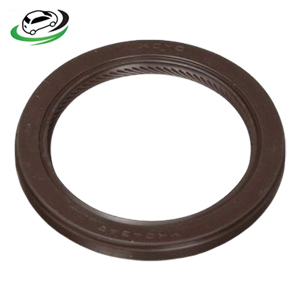-20%
Get Genuine Toyota 1NR-FE Oil Seal Type T – For CVT Oil Pump 90311-42039
The Genuine Oil Seal Type T is a high-performance sealing solution used in various automotive and industrial applications. This specific type of oil seal is designed to provide superior sealing performance under demanding conditions, ensuring the longevity and reliability of machinery and vehicles. This article delves into the function, materials, design features, common issues, replacement process, and maintenance of the Genuine Oil Seal Type T.
Function and Importance
The primary function of the Genuine Oil Seal Type T is to prevent the leakage of lubricants, such as oil or grease, from rotating shafts and housings in engines, transmissions, and other mechanical systems. This seal also prevents contaminants, such as dirt, dust, and water, from entering the system. Its key roles include:
- Sealing: It provides a tight seal around rotating shafts, preventing the leakage of lubricants.
- Contaminant Exclusion: It keeps external contaminants out, protecting internal components from wear and damage.
- Pressure Maintenance: It helps maintain the necessary pressure within the system, ensuring the proper operation of the machinery.
Materials
The Genuine Oil Seal Type T is made from advanced materials that are chosen for their durability and resistance to various operating conditions. Common materials include:
- Nitrile Rubber (Buna-N): Offers excellent resistance to oils, fuels, and a wide range of temperatures. It is cost-effective and suitable for many applications.
- Fluoroelastomer (Viton): Known for its high-temperature resistance and excellent chemical resistance, making it ideal for high-performance applications.
- Silicone Rubber: Provides exceptional heat resistance and flexibility, suitable for extreme temperature variations.
- Polytetrafluoroethylene (PTFE): Offers low friction, high chemical resistance, and excellent thermal stability, ensuring long-lasting performance.
Design Features
The Genuine Oil Seal Type T incorporates several design features that enhance its performance and durability:
- Lip Design: The seal typically features a single or double lip design that enhances sealing capability and prevents lubricant leakage even under high pressure.
- Spring-Loaded Lip: Many Type T seals include a garter spring that maintains constant pressure on the sealing lip, ensuring a tight seal against the rotating shaft.
- Reinforced Structure: The seal may have a metal or fabric-reinforced structure that provides additional strength and stability, preventing deformation under load.
- Dust Lip: Some designs include an additional dust lip that provides extra protection against external contaminants.
Common Issues
Despite their robust design, Genuine Oil Seal Type T can experience issues over time due to wear, improper installation, or harsh operating conditions. Common problems include:
- Oil Leaks: The most apparent sign of a failing oil seal is an oil leak, which can manifest as visible oil spots under the machinery or vehicle.
- Contaminant Ingress: A damaged seal can allow contaminants to enter the system, leading to accelerated wear and potential damage to internal components.
- Noise and Vibration: Insufficient lubrication due to a leaking seal can cause increased friction, resulting in noise and vibration.
- Overheating: Loss of lubricating fluid can reduce the system’s ability to dissipate heat, potentially leading to overheating and severe damage.
Replacement Process
Replacing a Genuine Oil Seal Type T is a crucial maintenance task that ensures the continued performance of the machinery or vehicle:
- Preparation: Ensure the system is safely shut down and cooled. Gather the necessary tools and replacement seal.
- Access: Remove any components obstructing access to the oil seal, such as covers, shafts, or housings.
- Removal: Carefully remove the old seal using appropriate tools, such as a seal puller. Avoid damaging the shaft or housing.
- Inspection: Inspect the shaft and housing for wear or damage. Clean the area thoroughly to ensure a proper seal.
- Installation: Apply a thin layer of lubricant to the new seal and carefully press it into place. Use a seal driver or a socket of the appropriate size to ensure even installation.
- Reassembly: Reinstall any components removed during the process, ensuring all bolts and fittings are tightened to manufacturer specifications.
- Testing: Start the system and monitor for any signs of fluid leakage. Check for abnormal noise or vibration, and verify that the system operates smoothly.
Maintenance
Proper maintenance can extend the life of the Genuine Oil Seal Type T and prevent premature failure:
- Regular Inspections: Periodically check for signs of fluid leaks around the seal and other system components.
- Timely Fluid Changes: Regularly change the lubricating fluid to ensure it remains clean, reducing wear on the seal and other components.
- Quality Parts: Use high-quality seals and lubricants designed for your specific application to ensure proper fit and durability.
- Proper Installation: Ensure seals are installed correctly, following the manufacturer’s specifications and using the right tools to avoid damage.
Follow us on Facebook for more parts





